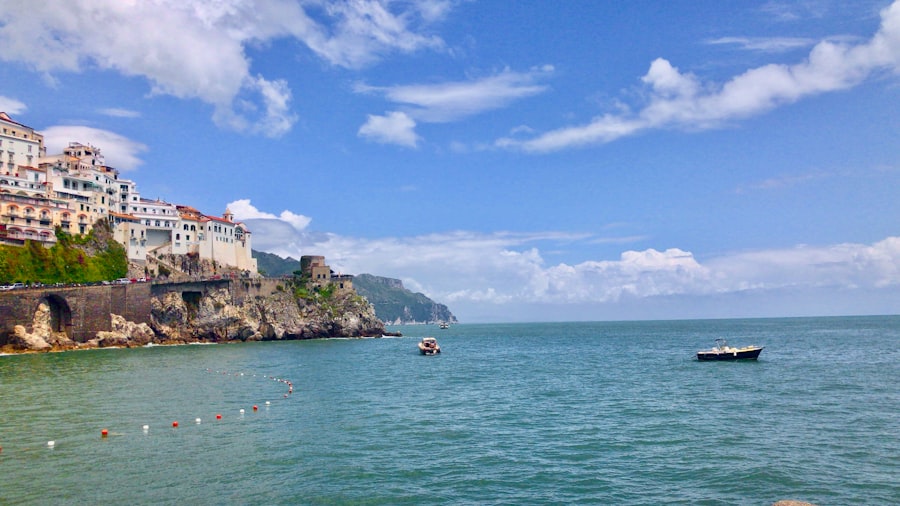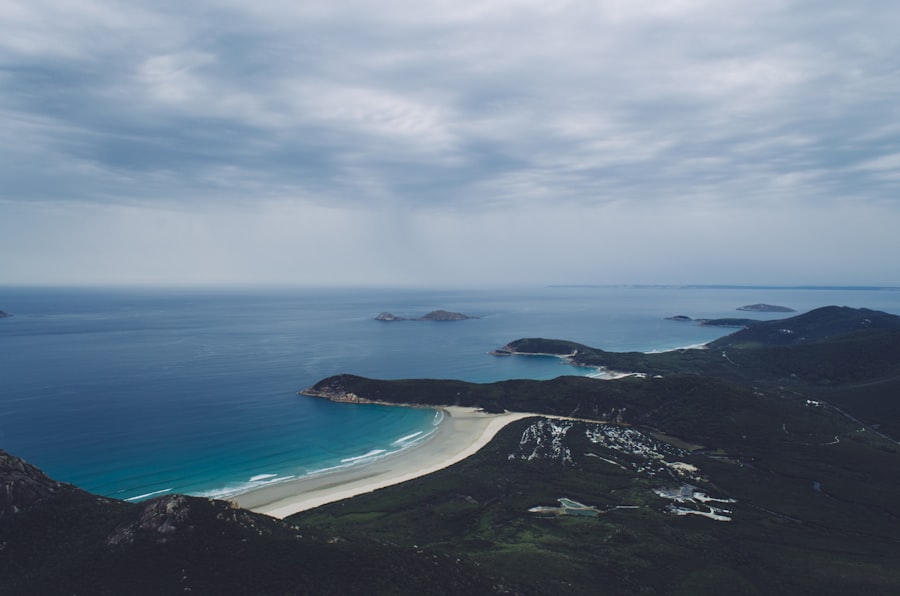
Nauru, a small island nation located in the central Pacific Ocean, is one of the least visited countries in the world, yet it possesses a unique charm that captivates those who venture to its shores. Covering just 21 square kilometers, Nauru is the third smallest country by area, following Vatican City and Monaco. Despite its diminutive size, the island boasts a rich tapestry of history, culture, and natural beauty that belies its geographical limitations.
The nation is situated approximately 300 kilometers south of the equator and is surrounded by a vibrant coral reef, making it a hidden gem for those seeking an off-the-beaten-path travel experience. The island’s population hovers around 10,000 residents, primarily of Nauruan descent. The official languages are Nauruan and English, reflecting the island’s colonial past and its interactions with various nations over the years.
Nauru’s economy has historically relied on phosphate mining, which has significantly shaped its landscape and development. However, in recent years, the government has sought to diversify its economy and promote tourism as a sustainable alternative. Visitors to Nauru can expect a warm welcome from the locals, who are known for their hospitality and friendliness, making it an inviting destination for those willing to explore its unique offerings.
Key Takeaways
- Nauru is a small island country in the Pacific Ocean, known for its phosphate mining and stunning natural beauty.
- Nauru has a rich history and culture, with influences from Micronesian, Polynesian, and Melanesian traditions.
- Must-see places in Nauru include Anibare Bay, Buada Lagoon, and the Command Ridge, offering breathtaking views and historical significance.
- Nauru is home to diverse wildlife, including seabirds, marine life, and unique plant species, making it a paradise for nature lovers.
- Nauruan cuisine features a variety of seafood dishes, coconut-based recipes, and local delicacies like pandanus fruit and breadfruit, offering a unique culinary experience for visitors.
Nauru’s History and Culture
Nauru’s history is marked by its discovery in the 18th century by European explorers, with the first recorded sighting attributed to the British ship “Dudley” in 1798. The island remained largely untouched until the late 19th century when it became a target for phosphate mining due to its rich deposits. This mining boom attracted foreign interests, leading to significant changes in the island’s social and economic structures.
The indigenous Nauruans faced numerous challenges as their land was exploited for its natural resources, leading to a decline in traditional practices and lifestyles. Culturally, Nauru is a melting pot of influences stemming from its colonial past and interactions with various nations. The island’s traditions are deeply rooted in oral history, with storytelling playing a vital role in preserving Nauruan heritage.
Traditional music and dance are integral to cultural celebrations, often featuring vibrant costumes and rhythmic movements that reflect the island’s history and beliefs. The Nauruan people also celebrate unique festivals that showcase their customs, such as the “Nauru Day,” which commemorates the island’s independence from Australia in 1968. This blend of history and culture creates a rich narrative that visitors can experience firsthand through local interactions and community events.
Must-See Places and Sights in Nauru

Exploring Nauru offers visitors a chance to discover a variety of intriguing sites that highlight the island’s history and natural beauty. One of the most notable landmarks is the Command Ridge, which served as a strategic military base during World War
Another must-see location is the Anibare Bay, renowned for its stunning white sandy beaches and crystal-clear waters. This picturesque bay is perfect for swimming, snorkeling, or simply relaxing under the sun. The tranquil atmosphere makes it an ideal spot for visitors looking to unwind while enjoying the natural beauty of Nauru.
Nearby, the Buada Lagoon offers a different experience with its lush vegetation and serene surroundings, providing an excellent opportunity for birdwatching and appreciating the island’s diverse flora and fauna.
Nauru’s Natural Beauty and Wildlife
| Category | Metric |
|---|---|
| Beaches | 14 pristine beaches |
| Wildlife | Over 100 bird species |
| Reefs | Colorful coral reefs |
| Flora | Unique plant species |
Nauru’s natural beauty is characterized by its unique landscapes, ranging from rugged cliffs to tranquil lagoons. The island’s interior features a phosphate plateau that has been heavily mined, leaving behind fascinating geological formations that tell the story of human impact on the environment.
This contrast between mined areas and untouched nature creates a striking visual landscape that is both haunting and beautiful. Wildlife enthusiasts will find Nauru to be an intriguing destination as well. The island is home to several endemic bird species, including the Nauru Reed Warbler and the Nauru Ground Dove.
Birdwatching opportunities abound, especially around coastal areas where migratory birds can be spotted during certain seasons. The surrounding coral reefs are teeming with marine life, making snorkeling or diving an exhilarating experience for those looking to explore underwater ecosystems. The vibrant coral formations provide habitats for various fish species, offering a glimpse into the rich biodiversity that thrives beneath the waves.
Nauru’s Unique Cuisine and Local Delicacies
Nauruan cuisine reflects the island’s cultural heritage and reliance on local ingredients. Traditional dishes often feature seafood, coconuts, and root vegetables such as taro and cassava. One popular dish is “Ikan Bakar,” which consists of grilled fish marinated in local spices and served with rice or vegetables.
This dish showcases the island’s access to fresh seafood while highlighting traditional cooking methods that have been passed down through generations. Another local delicacy worth trying is “Tuna Salad,” made with freshly caught tuna mixed with mayonnaise, onions, and other vegetables. This dish exemplifies the simplicity yet richness of Nauruan cuisine, emphasizing fresh ingredients that are readily available on the island.
Additionally, visitors may encounter “Nauruan Cake,” a sweet treat made from coconut milk and flour that serves as a delightful dessert option. Exploring local markets provides an opportunity to sample these dishes while engaging with friendly vendors who are eager to share their culinary traditions.
Practical Tips for Visiting Nauru

Traveling to Nauru requires some planning due to its remote location and limited infrastructure. The primary gateway to the island is through Nauru International Airport, which offers flights from Australia and other Pacific nations.
Once on the island, transportation options are limited; however, renting a bicycle or hiring a local guide can enhance the experience by providing insights into Nauru’s hidden gems. Accommodations on Nauru range from basic guesthouses to more established hotels, catering primarily to budget-conscious travelers. It is essential to book accommodations ahead of time due to limited availability, especially during peak travel seasons.
Visitors should also be mindful of local customs and etiquette; dressing modestly is appreciated, particularly when visiting cultural sites or interacting with locals. Engaging with residents can enrich one’s experience on the island—many are eager to share their stories and traditions with visitors. In conclusion, Nauru offers a unique travel experience characterized by its rich history, vibrant culture, stunning natural landscapes, delectable cuisine, and warm hospitality.
For those willing to venture off the beaten path, this small island nation promises unforgettable memories and insights into a way of life that remains largely untouched by modernity.
If you’re interested in exploring more about unique destinations around the world similar to Nauru, you might find the article on Equatorial Guinea quite fascinating. Like Nauru, Equatorial Guinea is a lesser-known country with rich cultural heritage and stunning natural landscapes. The article provides insights into the country’s history, culture, and key attractions that are worth visiting. To learn more about Equatorial Guinea and its similarities to Nauru, you can read the full article here.
FAQs
What is the population of Nauru?
The population of Nauru is approximately 10,000 people.
What is the capital city of Nauru?
The capital city of Nauru is Yaren.
What are some popular sights and attractions in Nauru?
Some popular sights and attractions in Nauru include Anibare Bay, Buada Lagoon, Command Ridge, and the Nauru Phosphate Corporation.
What is the official language of Nauru?
The official language of Nauru is Nauruan, but English is also widely spoken.
What is the currency used in Nauru?
The currency used in Nauru is the Australian dollar.
What is the climate like in Nauru?
Nauru has a tropical climate, with hot and humid weather throughout the year.



